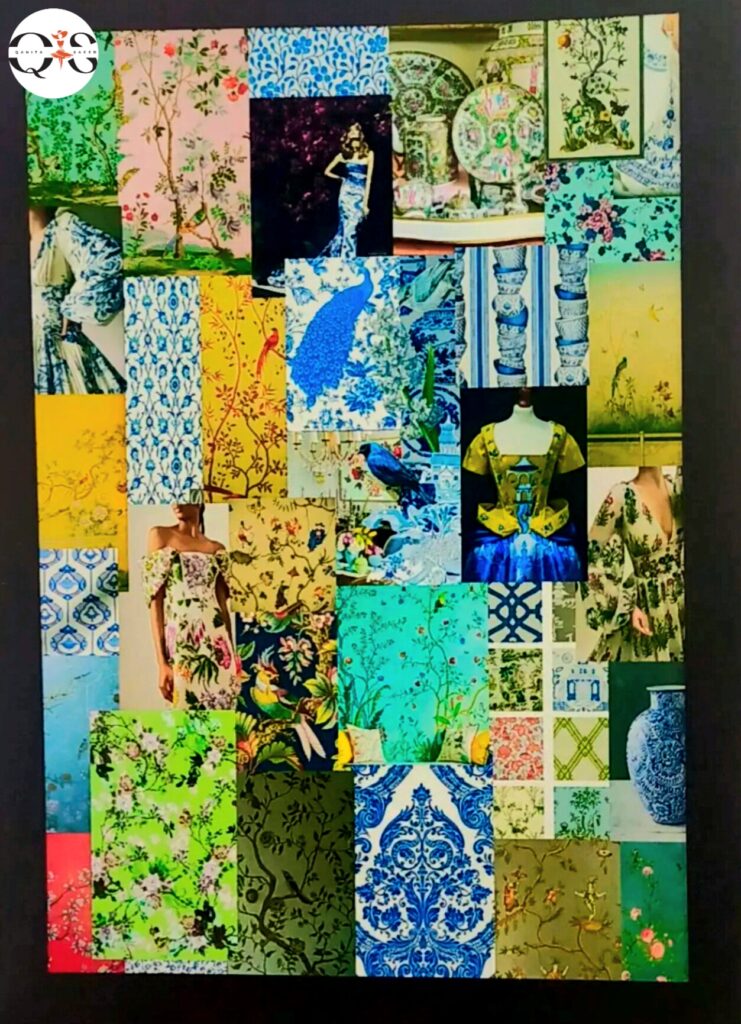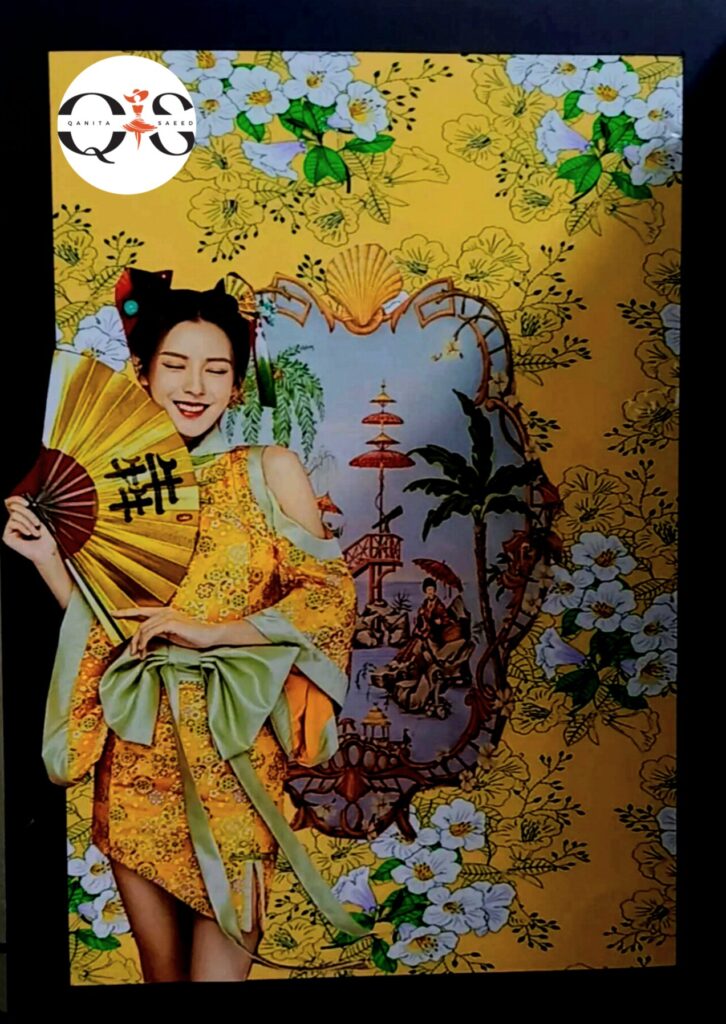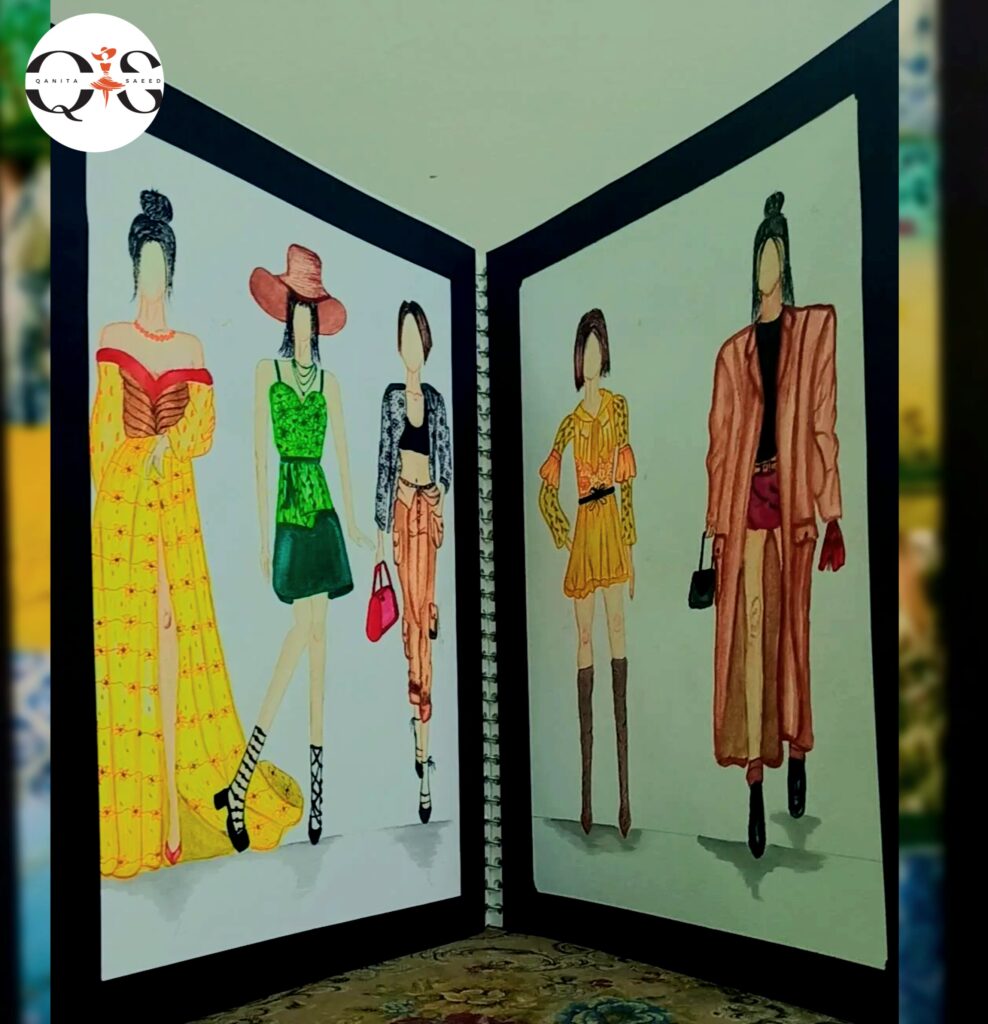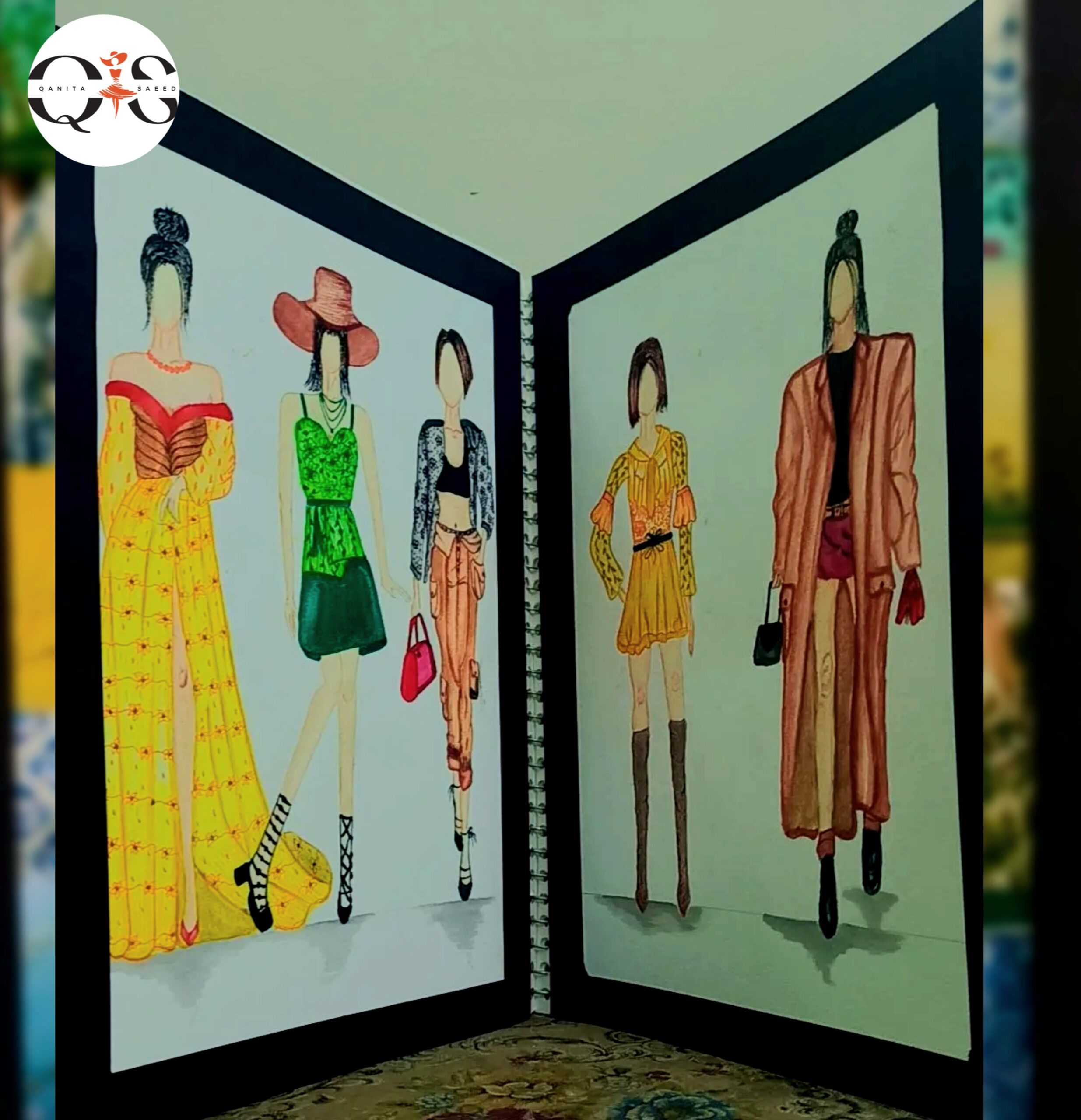CHINOISERIES 》CHI·NOI·SE·RIE 》SHEEN-WAA-ZR-EE
In fashion illustration, it refers to the incorporation of Chinese artistic and design elements in fashion illustrations. The term "Chinoiserie" originated in the 17th and 18th centuries and was used to describe European interpretations of Chinese art and culture. It became a popular trend in fashion, interior design, and other art forms. During that time illustrations often feature traditional Chinese garments like cheongsams, qipaos, or hanfu, and incorporate elements like delicate floral patterns, intricate embroidery, and symbolic imagery.
Chinoiseries can also influence the fashion itself, with designers drawing inspiration from Chinese garments, fabrics, colors, and traditional embroidery techniques. This can be reflected in the clothing silhouettes, patterns, and embellishments depicted in the fashion illustrations.
The use of chinoiserie in fashion illustration allows for a unique blend of cultural influences creating visually captivating and distinctive designs. It highlights the cross-cultural exchange between China and the West and adds an element of exoticism and romanticism to fashion illustrations.
Chinoiseries in fashion illustration allows artists and designers to infuse their work with an exotic and romanticized Eastern aesthetic. It can create a sense of fantasy, elegance, and cultural appreciation in fashion imagery, often blending Western and Eastern influences to create a unique visual language.
RESEARCH BOARD

I have gathered images of traditional Chinese art, such as paintings, ceramics, textiles, and architecture, focusing on motifs, patterns, colors, and techniques relevant to Chinoiserie. I've explored fashion illustrations by historical and contemporary designers known for incorporating Chinoiserie elements. Additionally, I've collected fashion photographs that showcase Chinoiserie-inspired clothing, styling, and set design. My research also includes traditional Chinese textiles, embroidery techniques, and patterns, emphasizing intricate craftsmanship. Moreover, I've compiled images of Chinoiserie-inspired decorative elements like wallpapers, porcelain, furniture, and interior design.
MOOD BOARD
I have included fashion photographs, runway images, and designer look books that showcase garments or styling inspired by Chinoiserie. I specifically sought out clothing featuring oriental motifs, embroidery, silk fabrics, and traditional Chinese-inspired silhouettes. In developing a color palette that reflects Chinoiserie aesthetics, I have considered hues such as yellow, brown, green, gold, and ivory. I aimed for a balance between bold and subtle tones to capture the essence of this artistic style. Furthermore, I have added images of decorative Chinoiserie elements, such as lanterns, fans, parasols, and ornamental screens. These details serve as sources of inspiration for incorporating Chinoiserie into fashion illustration compositions. Throughout the process, I have maintained grammatical correctness to effectively convey the nature of my research and the visuals I have collected.

FASHION ILLUSTRATION

Based on the Chinoiserie mood board I have created, I am now able to translate those inspirations into a Chinoiserie fashion illustration. Here is a description of a potential Chinoiserie fashion illustration inspired by the elements from the mood board. In this fashion illustration, all figures are depicted wearing flowing dresses inspired by the cheongsam, made from luxurious silk fabric. The main dress featured in the illustration showcases a vibrant yellow hue, embellished with intricate floral embroidery in shades of red and soft pink. Alongside the dresses, the illustration also incorporates additional garments such as cargo pants, long coats, shorts, and knee-length frocks, each capturing the essence of Chinoiserie design.
Overall, this Chinoiserie fashion illustration harmoniously combines the elegance of traditional Chinese elements with the grace and sophistication of contemporary fashion. It adeptly captures the allure and exoticism associated with Chinoiserie, presenting a captivating fusion of Eastern and Western aesthetics.
Epilogue
Chinoiserie fashion, as a style influenced by Chinese aesthetics during a specific historical period, holds significance in Western design. However, it is essential to acknowledge the complexities and problematic aspects associated with this style. While appreciating its historical value, it is imperative to approach cultural influences with respect, understanding, and a steadfast commitment to accurate representation. By doing so, we can ensure a more inclusive and culturally sensitive approach in the realm of fashion and design.


